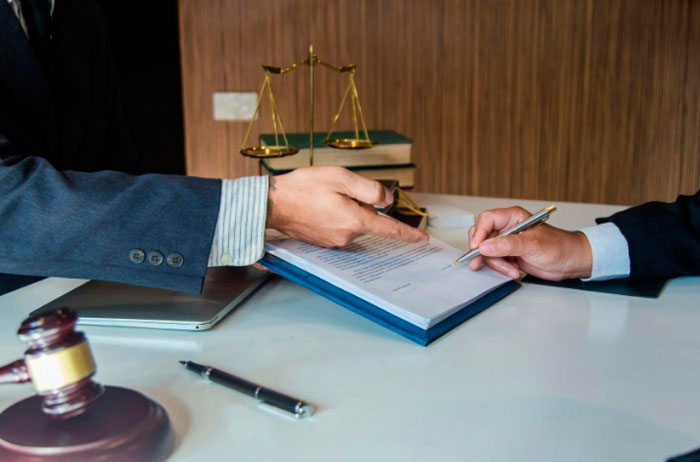Civil rights litigation has long been a cornerstone in the fight for equality, justice, and systemic reform in the United States. Through the legal system, individuals and advocacy groups challenge discriminatory policies, institutional misconduct, and violations of constitutional rights. These cases not only seek remedies for those directly affected but often set legal precedents that benefit broader communities.

As explained by Rawsi Williams, organizations such as the ACLU and NAACP Legal Defense Fund play pivotal roles by combining legal expertise with community action, helping to amplify underrepresented voices and drive meaningful change. Lawyers and advocacy groups use tools such as lawsuits and class actions to enforce existing laws and seek remedies through the courts.
Title VII of the Civil Rights Act, the Fair Housing Act, and the Voting Rights Act are frequently cited in these efforts. A notable case that brought national attention to school segregation and helped reshape public education was Brown v. Board of Education. That decision not only changed the legal landscape but also shifted public discourse on racial equality in schools.
Driving Policy Change Through the Courts
Civil rights litigation has long been a catalyst for legislative and policy reform. When courts rule on these cases, their decisions can prompt lawmakers to revise outdated statutes or establish new protections. Over time, these rulings build legal precedents that influence government practices and public expectations.
Take the Americans with Disabilities Act, which was strengthened by several court decisions that clarified how employers and public services must accommodate individuals with disabilities. Similarly, Brown v. Board of Education not only dismantled legal segregation in schools but also laid the groundwork for broader civil rights legislation throughout the 1960s. Legal victories often draw national attention, moving issues from courtrooms to congressional floors. In some cases, these decisions have led to the creation of entirely new regulatory or oversight bodies.
Holding Institutions Accountable
Civil rights lawsuits pressure institutions, government agencies, police departments, school districts, and private businesses to confront and correct discriminatory practices. When these cases succeed, they can lead to structural reforms, financial restitution, or legally binding agreements that change how an institution operates.
In recent years, several police departments have undergone federal oversight following court findings of systemic misconduct. These outcomes don’t just resolve individual complaints; they often mandate policy changes, training programs, and ongoing monitoring to prevent future violations. Accountability through the legal system ensures that institutions can’t ignore the harm caused by entrenched bias or negligence.
Impact on Underserved and Marginalized Groups
Civil rights litigation plays a vital role in amplifying the experiences of people who are often left out of policy conversations. Whether it’s students in underfunded schools, tenants facing housing discrimination, or voters in districts with unfair access to the polls, legal action can bring their struggles to light and push for tangible change.
In many communities, a legal victory can mean the difference between exclusion and opportunity. Court decisions have helped dismantle barriers that once kept women, people of color, and immigrants from fully participating in public life. These gains are hard-won and often take years of advocacy, but they leave lasting impacts. Such victories also inspire further activism, creating a ripple effect across other marginalized groups.
Despite progress, challenges persist. Many individuals lack the resources or legal knowledge to pursue justice on their own. Without pro bono support or the involvement of advocacy groups, systemic inequities can remain unchallenged.
Support from Advocacy Organizations and Communities
Groups like the ACLU and the NAACP Legal Defense Fund are often at the forefront of civil rights litigation, combining legal expertise with grassroots organizing. Their involvement brings not only legal weight to a case but also public visibility, which can influence outcomes in and out of the courtroom.
Community voices are equally crucial. Public rallies, petitions, and testimonies from those directly affected can strengthen legal arguments by demonstrating the broader impact of a policy or practice. When communities and legal advocates work together, their efforts often carry more weight and lead to deeper reforms.
The media, too, plays an indirect role by shaping public opinion and putting pressure on institutions. Coverage of high-profile cases can spark national conversations and lead to a cascade of local efforts aimed at justice and reform.
Future Directions and Ongoing Efforts
As society evolves, so do the challenges facing civil rights advocates. New issues such as algorithmic bias, surveillance technologies, and digital privacy are emerging as the next battlegrounds for legal reform. These areas often lack clear protections, making litigation a key tool in establishing new standards.
Legal strategies are also adapting. Attorneys are increasingly using data analysis, coalition-building, and storytelling to strengthen their cases and make them resonate beyond the courtroom. This evolution ensures that civil rights litigation remains responsive to modern problems. Courts are beginning to recognize the significance of digital rights as part of the broader civil rights framework.
